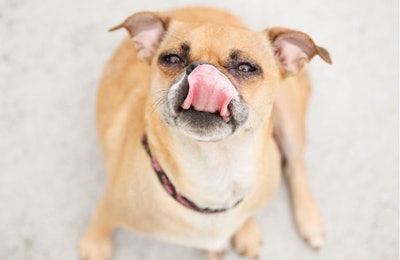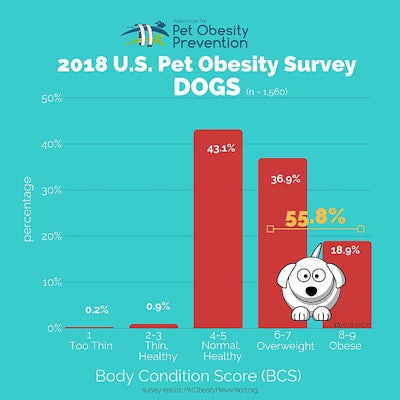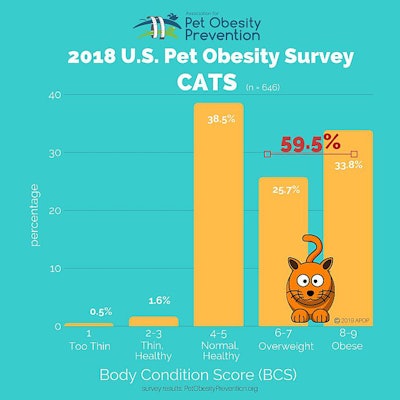
The obesity rate among dogs and cats in the United States remained high in 2018, at similar rates to the previous year. In the Association for Pet Obesity Prevention’s (APOP) annual survey results, veterinarians classified 33.8 percent of cats and 18.9 percent of dogs as obese in 2018. They identified 36.9 percent of cats and 25.6 percent of dogs as overweight. In the 2017 clinical survey, 56 percent of dogs and 60 percent of cats were classified as overweight or obese.
Rising awareness of pet obesity
APOP survey statistics for 2018 suggest that an estimated 56 million cats and 50 million dogs are overweight or obese in the U.S., based on 2018 pet population projections provided by the American Pet Products Association.
“I don’t recall this high number of obese pets 30 years ago,” Ernie Ward, DVM, founder of APOP, told Petfood Industry. “But also we were oblivious to what was going on in pet obesity. Very little was taught in veterinary school. There was little literature…So, the numbers were down but ignorance was up.”
Now, the prevalence of pet obesity clearly is up, he said, but likewise awareness has grown.
“Golden age” of pet obesity awareness and treatment
Ward compared the current state of pet obesity awareness to that of cancer several decades ago.
“Growing up on farm, we didn’t talk about cancer in animals,” he said.
As Ward grew up and fulfilled his childhood dream of becoming a vet, awareness of cancer in animals, including pets and livestock, also grew. Veterinarians now have various options for addressing cancer, as well as limiting risk factors, in dogs, cats and other animals.
On the other hand, obesity is the most common ailment Ward sees in his veterinary practice, yet he has only one treatment.
“All we can say is feed less and exercise more,” he said. ‘That doesn’t work for humans, much less pets.”
Just as human obesity awareness and treatment options have increased, Ward foresees increased options for addressing the obesity epidemic in U.S. pets.
“We’re entering a golden age for pet obesity,” he said.
About U.S. pet obesity survey
APOP conducts an annual obesity prevalence survey in the U.S.
This year, veterinary health professionals assessed the body condition scores (BCS) of every dog and cat patient they saw for a regular wellness exam on a given day in October 2018. BCS was based on the standardized nine-point whole integer scale and actual weight. The latest survey included the assessment of 1,560 dogs and 646 cats by 146 veterinary clinics representing 41 U.S. states during October and November 2018.



















